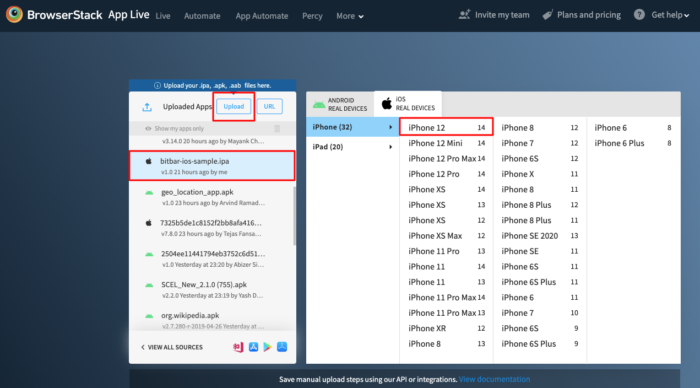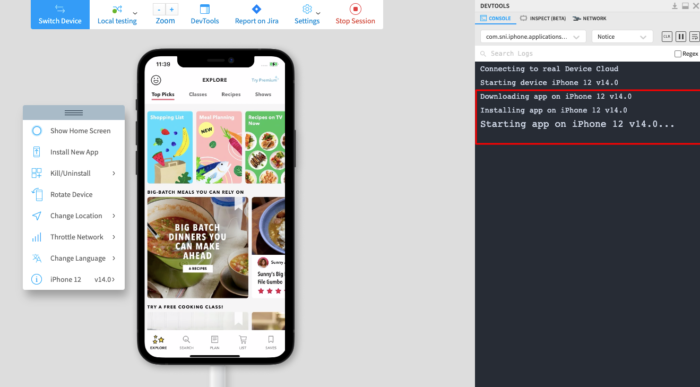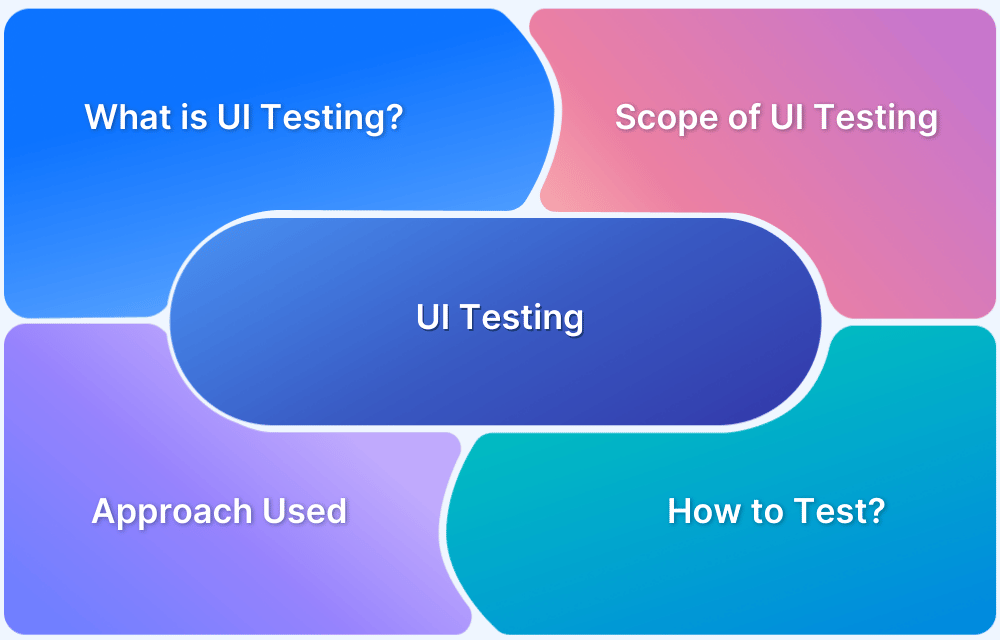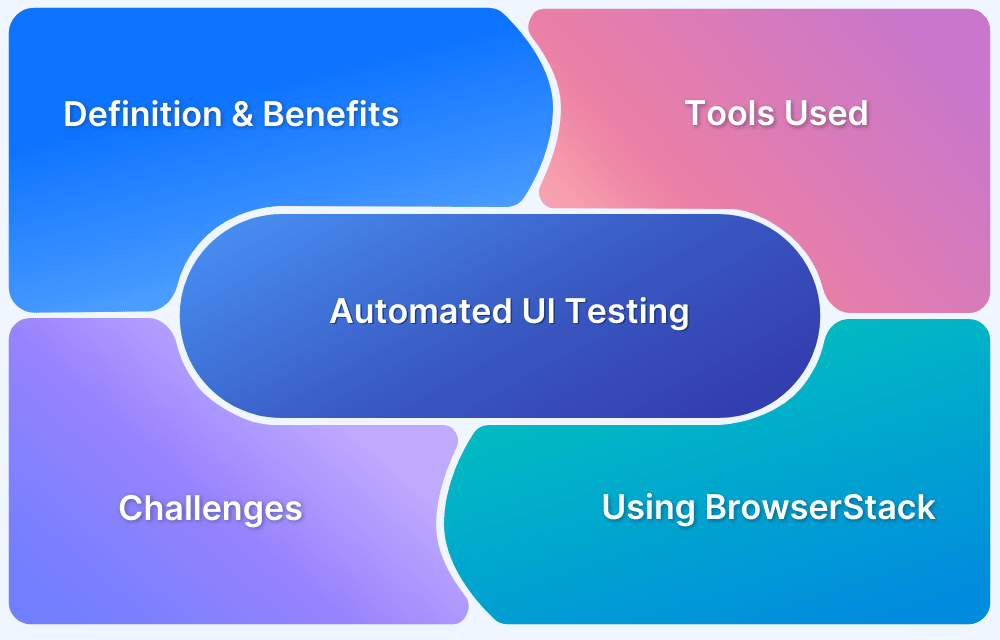A smooth and responsive user interface is critical to the success of any iOS app.
Given iOS’s large and loyal user base, ensuring the UI works flawlessly across different iPhones and iPads is essential before release.
Overview
Here’s how teams can perform UI testing on real iOS devices:
- Upload the iOS app file to a testing platform that supports real-device access, like BrowserStack App Live.
- Select the iPhone or iPad model to run tests on (e.g., iPhone 12, iPad Pro, etc.)
- Interact with the app as users would, tap, scroll, rotate, and more
- Test across multiple iOS versions for broader coverage
- Validate UI in real-world scenarios like different geolocations, languages, and device orientations
This guide explains how to perform UI testing on iOS devices using a scalable, cloud-based solution.
Why People Want to Try iPhone UI and Why It Matters
iOS powers a significant share of global mobile usage, making it essential for teams to understand how their apps or websites appear and behave on iPhones. Experiencing the real UI helps validate design, usability, and performance.
Here’s why trying the iPhone UI matters:
- Understand real user flow: Interact with the actual navigation and gestures used by millions of iOS users.
- Evaluate design accuracy: See how layouts, fonts, and animations render on real iPhone screens.
- Validate usability: Identify UI/UX issues that may not appear in simulated environments.
- Test touch responsiveness: Real devices provide true feedback for swipes, taps, and long-presses.
- Catch platform-specific bugs: Some issues only appear on physical hardware or specific iOS versions.
Must Read: What is UI Responsiveness Testing?
Trying the iPhone UI on real devices offers insights that no emulator or simulator can fully replicate, especially for teams focused on delivering polished, user-friendly products.
How to Experience and Test iOS UI on Real Devices
Simulators often fail to replicate the real iOS user experience.
They lack precise device behavior, accurate touch interactions, and hardware-level responsiveness, making them unsuitable for thoroughly evaluating UI performance.
BrowserStack App Live addresses these limitations by providing instant access to real iPhones and iPads on their real device cloud.
Whether previewing app interfaces or validating usability across iOS versions and devices, teams can reliably assess the real user conditions without needing physical device labs or complex setups.
UI Testing of iOS Apps on Real Devices with BrowserStack
BrowserStack is a cloud-based testing platform that enables QAs to conduct UI tests for iOS on real Apple devices at scale. Its real device cloud comprises the latest and legacy versions of iPhones and iPads (iPhone 6, iPhone X, iPhone12, iPad Pro, etc.) running on distinct iOS versions.
Follow the steps below to run UI tests on specific iOS devices:
- Signup for a free trial or purchase a specific plan for Browserstack App-Live
- Once the App-live dashboard opens up, click on the Uploaded apps section
- Click on the Upload button and upload the iOS app file (.ipa file) to be tested
- Select the desired Apple handset on which UI testing must be conducted. (Let’s consider testing on iPhone 12 in this example). Refer to the image below for more clarity on the process:
- Clicking on the desired handset will initiate a new App-Live session on it
- The selected iOS file is downloaded and installed on the chosen device (iPhone 12) once the session begins. Refer to the image below:
That’s how easily QAs can start with UI testing of an iOS application on a real iPhone. No complex configurations or set-up required.
One can also leverage the following features to perform extensive UI testing of iOS apps:
- Device rotation to test UI behavior in Portrait and Landscape mode
- Natural gestures and interactions like tap, scroll, zoom, swipe, and more
- Testing the UI in different languages using the Change Language feature
- Testing websites from different geographical locations using Geolocation testing
- Testing in-app purchases and push notifications and few others.
Note: QAs seeking to test use cases or features covered under iOS entitlements like Push Notifications, Keychain Sharing or Data Protection, etc., need to ensure that their iOS app is signed with an Enterprise Distribution Certificate.
Apps that are signed with a Developer Certificate won’t be able to support Entitlement testing. Learn about the difference between Enterprise and Developer Certificate.
As mentioned earlier, iOS is the second most popular mobile operating system globally and has emerged as a fierce competitor against Android. Needless to say, sufficiently inclusive UI testing of iOS apps in real user conditions is a must for ensuring the success of iOS apps.
The Need for Comprehensive UI Testing
Thorough UI testing on real devices is essential once you move beyond simply exploring or trying the iPhone UI. Here’s why it’s important.
- iOS holds global relevance: With iOS being the second most used mobile OS, ensuring your app works perfectly on iPhones and iPads is critical for user adoption and retention.
- First impressions aren’t enough: A quick UI preview can’t reveal deeper performance, responsiveness, or design consistency issues.=
- Real devices = real conditions: Only testing on actual Apple devices can uncover device-specific bugs, UI misalignments, and OS-level behavior differences.
- Consistency across iOS versions: Different iOS versions may render UI elements differently. Thorough testing ensures a consistent experience across the board.
- Better user experience = better business outcomes: Reliable UI leads to higher engagement, fewer support issues, and a stronger brand reputation.
Conclusion
Thorough iOS app testing ensures comprehensive coverage before launch. Setting up and maintaining on-premise Apple device labs is costly and time-consuming, especially for small and medium teams.
BrowserStack offers a practical alternative. Test run on real devices like iPhone X, iPhone 12, or iPad Pro from anywhere, delivering precise and dependable results every time.








